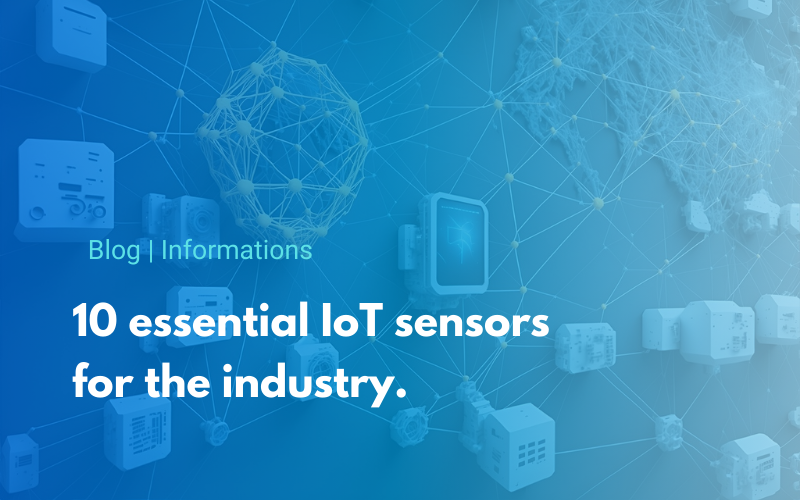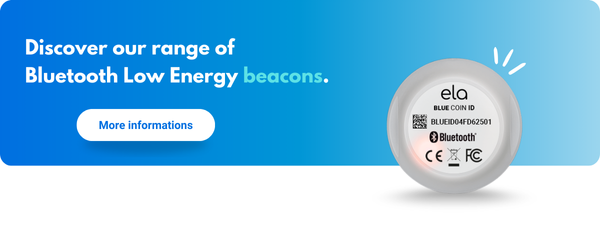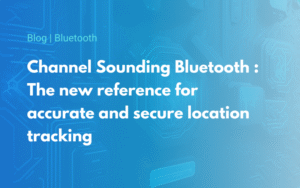
The Internet of Things (IoT) is revolutionising industries ranging from logistics and agriculture to infrastructure management. At the heart of this transformation are IoT sensors, which can collect essential data in real time and automate many processes. Discover 10 essential sensors that help integrators perfect their solution.
1. Temperature sensor – Optimising the cold chain
Temperature control is essential in the health, food and transport sectors. This sensor ensures accurate monitoring in isothermal boxes and refrigerated lorries, guaranteeing compliance with health standards and product quality.
2. Presence sensor – Safety and automation
Essential in smart building, presence sensors optimise the management of flexoffice spaces and meeting rooms by monitoring occupancy in real time. It makes booking easier, reduces energy consumption by adjusting lighting and air conditioning, and improves user comfort. At the same time, it enhances security by detecting intrusions into sensitive areas, contributing to more effective surveillance.
3. Door opening sensor – Monitoring and energy efficiency
Essential in the transport industry, these sensors monitor the opening of lorry doors and tailboards, guaranteeing the safety of goods. They are also used in cold stores, where they monitor openings to preserve the cold chain and limit energy losses.
4. Motion sensor – Predictive maintenance and monitoring
The use of sensors capable of measuring the vibrations and movements of industrial equipment plays a key role in predictive maintenance. By continuously monitoring the condition of machines, these devices can detect early signs of malfunction, anticipate breakdowns and limit production interruptions. In this way, they offer an effective means of optimising equipment life and reducing maintenance costs.

5. Air quality sensor – Environment and well-being
Air quality sensors measure the concentration of fine particles, CO2 and other pollutants. They are essential for ensuring a healthy environment in factories, offices and public spaces.
6. Tank level sensor – Stock and fluid management
Level sensors are used to monitor the filling of tanks and vats in the chemical, oil and food industries in real time. These sensors help avoid stock-outs and optimise stock management.
7. Soil moisture sensor – Intelligent agriculture
In the agricultural sector, soil moisture sensors enable irrigation to be optimised by accurately measuring humidity, thereby reducing water consumption and increasing yields.
8. Smoke sensor – Fire safety
Essential for safety, these sensors detect smoke particles and send out early warnings to prevent fires, protecting infrastructure and employees.
9. Gas detection sensor – Industrial risk prevention
Used in the petrochemical and manufacturing industries, these sensors detect the presence of toxic or flammable gases, ensuring the safety of workers and preventing accidents.
10. Water leakage sensor – Infrastructure protection
Water leakage sensors are crucial for preventing water damage in industrial and commercial buildings. They enable rapid reaction in the event of water ingress.
IoT sensors, the pillars of connected industry
The adoption of IoT sensors is radically transforming industries by optimising resource management, safety and productivity. Through intelligent integration, these sensors are making environments not only more efficient, but also more sustainable.
The market for connected sensors is growing by leaps and bounds, driven by the expansion of digital technologies and the optimisation of industrial processes. It is estimated that the global market for IoT sensors will reach more than $98 billion by 2029, with an average annual growth rate of more than 20%. This rapid expansion is fuelled by growing demand for automation, predictive maintenance and efficient infrastructure management.
The Internet of Things (IoT) is a strategic lever for businesses looking to become more competitive. By enabling real-time data collection and more informed decision-making, these sensors are revolutionising the sectors of logistics, industrial maintenance, agriculture and many others. They are also contributing to the transition to a more eco-responsible industry by reducing waste and improving energy efficiency.
Translated with DeepL.com (free version)
So investing in IoT sensors will soon no longer be an option, but a necessity for companies wishing to adapt to the challenges of the future.


